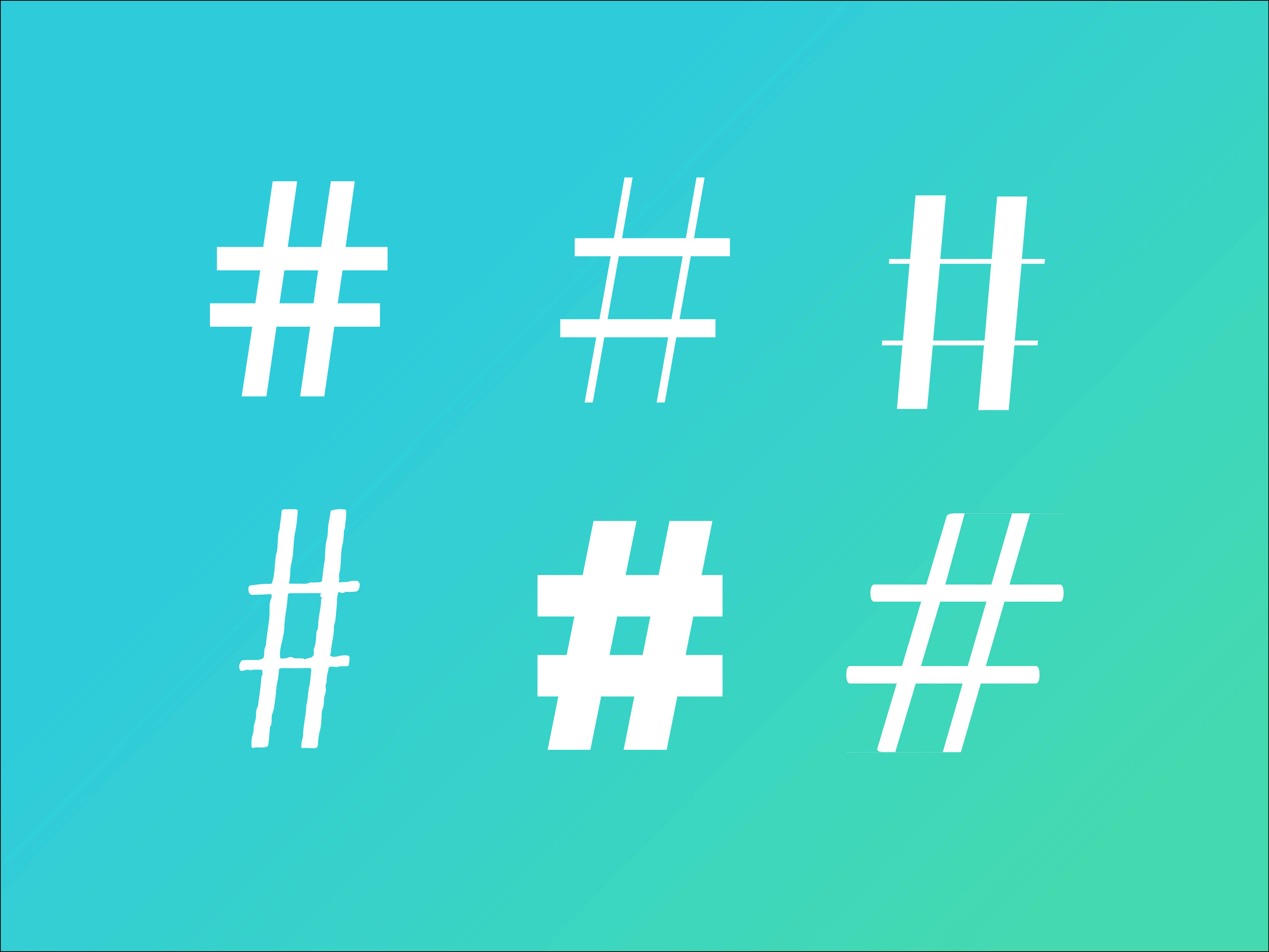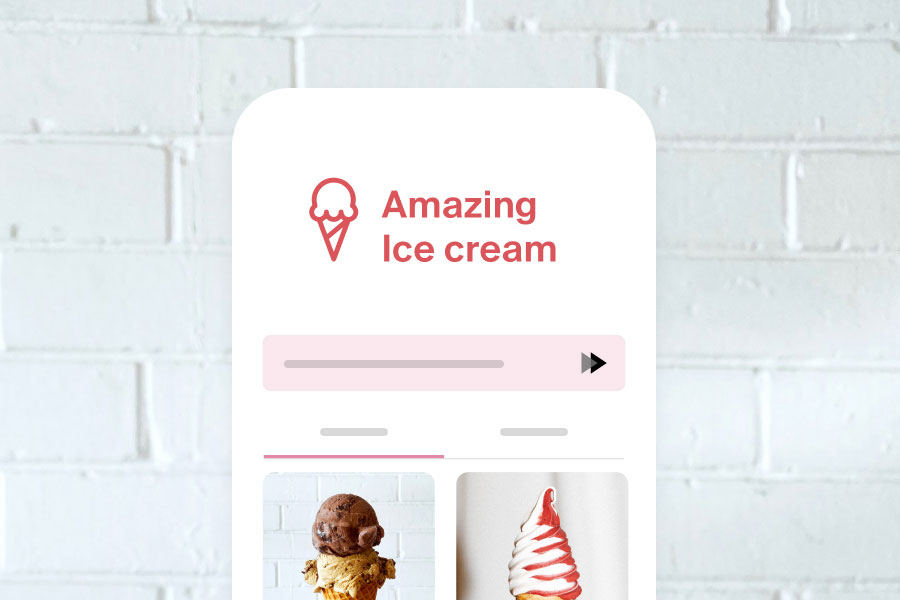Instagram hashtags: the do's and dont's your restaurant needs to know
By Ibrahim Zaghw

What if I told you that hashtags could increase your engagement on Instagram by 12.6%?
According to some sources, a post with at least a single hashtag can get up to 29% more engagement. And if you increase the number of hashtags to 11 or more, you can enjoy 79.5% more interactions per post.
Wait, what are hashtags?
When you look at an Instagram post’s caption, you will likely find at the bottom several words, each of which has a pound sign (#) before it. These words will look something like this:
Each pound sign and word after it is a hashtag. And when you tap or click on these hashtags, you will be redirected to a page containing all posts with said hashtag.
So, hashtags categorize your posts, let Instagram know what your post is about, and (as we’ve just seen) boost your engagement.
But hashtags can do so much more than increase your engagement.
The real power of hashtags
With the right hashtags, you can give your Instagram account the boost it deserves:
-
1. Expand your reach
Users search Instagram in one of two ways: They either search for specific individuals or look up particular hashtags. And once they search for a hashtag and hit that magnifying glass at the end of their search bar, they will be directed to a page filled with posts containing that hashtag.
So, with the right hashtags, you give your potential fans new ways of finding you. For instance, if you sell fried chicken burgers in Cairo and you put #friedchickenburger in the caption of your next post, said post will show up here:
So, the next time someone browses that page, they might very likely come across your post.
-
2. Build your following
Let’s say that you have more than one Instagram account; perhaps, you have more than a single restaurant under your belt. Using hashtags, you can get the followers of one account to start following your other brands without being overly promotional.
For example, if you have two different restaurants that sell Italian food, you can tag posts from both accounts with #italianfoodloversforever, which has no posts so far. Accordingly, this hashtag will be an excellent way to introduce the followers of brand A to brand B and vice versa.
-
3. Strengthen your brand
In addition to targeting hashtags with little traffic, you should create hashtags specific to your brand, also known as branded hashtags. Not only will this help your brand get a stronger foothold, but it will also be an excellent way to encourage user-generated content.
So, a brand called “Cairo’s Fried Chickens” should always use #CairosFriedChickens with every post. And, when an avid brand fan wants to create a post, they will use the same hashtag themselves.
The ABCs of hashtags
By now, you should be convinced of the importance of hashtags, which brings us to the next question: how do you use them?
So, without further ado, here are the basics you need to know:
The shape of a hashtag
The first thing you should know is what goes in a hashtag and, more importantly, what doesn’t.
While a hashtag can contain letters, numbers, and acronyms, it can’t contain any punctuation marks. So, you can’t use a full stop in the middle of your hashtag.
You also want to make your hashtags clear. This means that you might have to capitalize some letters to make the hashtag more legible. To see this point, take a look at the following two hashtags and ask yourself which one is easier to read:
And, don’t repeat hashtags within a specific post. It doesn’t do you any good, comes across as spammy, and just eats up precious real estate you could use for something else.
The rules of hashtags
You can use hashtags with your posts, stories, and reels.
Using hashtags with posts
Instagram allows you to use up to 30 hashtags with each post.
You can place these posts in either the caption or in a comment. And, to provide your followers with the best experience, you might want to hide these hashtags. So, if you place them in the caption, then make sure you leave a little space underneath the original caption. That way, your followers won’t see them unless they hit that “more” button.
This is what the written caption should look like:
Notice how the hashtags are all placed at the bottom.
And this is what your followers will see:
You can even push the hashtags lower by creating new lines with a simple dot.
Alternatively, if you decide to place the hashtags in the comments, that is entirely fine. And, it doesn’t affect the effectiveness of said hashtags while being another excellent way of hiding them.
Using hashtags with stories
Instagram allows you to use up to 10 hashtags with your stories. These hashtags will appear right across your story, but you can hide them in one of several ways:
1. You can make their color very similar to the background, blending them.
2. You can cover the hashtag with a sticker.
Source: Christina Newberry
Different types of hashtags
There are several types of hashtags
Industry hashtags
As the name suggests, these relate to a particular industry. For instance, if you are a restaurant, any hashtag related to the F&B industry will probably work for you. Examples include #foodpics, #foodporn, and #restaurants.
Niche hashtags
These are more specific and relate to your specific profile. So, for the burger places out there, you might want to use hashtags such as #burgertime, #burgerlovers, and #burgerday.
Special events or seasonal hashtags
Hashtags can also be used to mark special events or occasions. So, next Ramadan, don’t shy from using #ramadan and #ramadanvibes.
But, you don’t need to wait for a special occasion. You can celebrate anything, including #summer, #throwbackthursday, and #july.
Location hashtags
Just as you can use hashtags related to time, you can use hashtags related to locations. So, if you operate in Cairo, don’t hesitate to add #Cairo and #thisiscairo. You can take things a step further by using an even more specific hashtag. For example, if your restaurant is in a well-known mall (which we shall call City Center just for argument’s sake), you can use #CityCenterCairo.
Branded hashtags
These hashtags carry your specific brand name and possibly something else added to the mix. As a result, they can be excellent vehicles to spread your name around and to help generate user-generated content.
Different hashtags by size
Hashtags are similar to keywords in that they can also vary by the number of posts attached to them. Accordingly, you have three main types of hashtags:
Broad and low intent hashtags
These are short hashtags that have hundreds of thousands, if not millions, of posts attached to them. Simple examples include #foodies and #Instapic.
And while these hashtags may be popular, they are very competitive. This means that any post you try to include will probably get devoured quickly by the large numbers of posts coming in from other Instagram users. As a result, your post will end up swiftly buried, never seen by most users checking out this hashtag.
Specific, high-intent hashtags
At the other end of the spectrum, you have specific hashtags that closely resemble long-tail keywords. These hashtags are attached to a few posts, and your post can easily appear there.
How to create a hashtag strategy
With a solid understanding of the ins and outs of Instagram hashtags, you are ready to start strategizing.
-
1. Research the best hashtags
You first need to research the best hashtags for your business, i.e., those that will get you the most engagement. You want to find hashtags of every type and every size. So, by the end of your research, you should have a list of industry, niche, and location hashtags. And each type should contain both broad and specific hashtags.
To that end, here are the best steps you can take:
A. Look at the competition
There are several restaurants that operate in your niche. You should research those that are most popular on Instagram and see what hashtags they are using. Some of those hashtags might not work for you, such as the branded hashtags, but you will find a tremendous wealth of ideas there.
B. Look at influencers
Another source of inspiration can be other influencers. In the F&B industry, food influencers can have plenty of sway. So, why not learn from the pros? See what hashtags they use, especially when they post about restaurants similar to yours, and take from them what works for you.
-
-
-
-
-
-
-
-
-
-
-
-
-
-
-
C. Look at what your followers are doing
-
-
-
-
-
-
-
-
-
-
-
-
-
-
You can also benefit from what your followers are already using when posting about you. And, you don’t have to limit yourself there: you can look at what the followers of your competition are doing.
D. Use a research tool
There are several online tools that can help you get an upper leg on the competition. They will help you find the best hashtags for your brand.
E. Use Instagram itself
Sometimes, the simplest methods can be the most effective. You can just come up with a hashtag or get a hashtag generator to give you a few suggestions. Next, use Instagram’s search bar to see whether the hashtags you came up with are relevant to your brand or not.
Batter yet, if you find a hashtag you like, Instagram will recommend related hashtags for you.
The good news is that we have done all this hard work for you, so you don’t have to. Check out this list of hashtags that you can use right now.
-
2. Filter and weed out the best hashtags for you
Armed with a list of hashtags from your research, it’s time to weed out what doesn’t work and find the best options.
You want to choose the hashtags based on relevancy and popularity.
You can also mix and match different hashtags together. For example, if your research highlighted these two broad hashtags: #FriedChicken and #Kuwait, you can combine them both into one specific hashtag: #FriedChickenKuwait.
-
3. Create lists of hashtags
You don’t want to use the same hashtags with every post you publish on Instagram. Instead, you want to create set lists of hashtags, and each list will belong to a specific type of post.
For example, if you have a dessert and bakery shop, you can have a list of hashtags for your doughnuts, another list for your cakes, and a third list for your cookies.
Now, each list must contain the following:
a. Industry hashtags, which will probably be broad. So, you don’t want to overuse them. 1 or 2 will do fine.
b. Niche hashtags, which will differ by the type of post. You can afford to be creative here and use more specific hashtags. You can also combine niche hashtags with other types, including location and event hashtags.
c. Location hashtags, which should contain both general, such as #Egypt, and more specific such as #CityCenterMall.
d. Event hashtags, which as we mentioned before can be either for a particular occasion or to celebrate the fact that it is Friday today.
4. Use the hashtags, monitor the results, and update
Once you’ve added hashtags to your post, publish and watch the results. You will find that some hashtags are giving you excellent results, but others are more lackluster. You want to keep the winners while replacing the losers.
And the good news is that there is plenty of room for experimentation here. There is no way of knowing for sure which hashtags will work well with your brand. You need to go through the process of trial and error.
Moreover, hashtags are dynamic creatures: What might have been popular and trending today may become obsolete or old news tomorrow. So, you should always keep your eye on the pulse.
Instagram hashtags tips and best practices
Even though you might have a solid strategy, you also want to consider the best practices when using hashtags.
1. How many hashtags to use per post?
This is one of the most recurring questions people have, and to add to the confusion, there is no one correct answer. Instead, different sources will give you different answers.
But, according to Later (a big name in the social media marketing space), you want to use between 20 to 30 hashtags per post.
To be more accurate, if the objective of your post is to maximize reach, you might want to consider 20 hashtags.
Alternatively, if your objective is to maximize engagement, then you might want to consider 30 hashtags.
2. Avoid banned or spammy hashtags
You will come across several spammy hashtags during your research. You should stay away from those.
Some common examples include #likeforlike, #followforfollow, and #bhfyp.
These are empty hashtags that will neither help your posts nor engage your audience. Instead, you want to stay true to your brand and pick the best hashtags that will serve your followers best.
3. Be careful of hashtags that don’t mean what you think they mean
Seeing as hashtags can be a list of words strung together without a space in between, it is easy to create a hashtag that has more than one meaning. And you wouldn’t even notice it until it’s too late.
An infamous example that will forever live in the memories of Instagram users is when Susan Boyle, the Scottish singer, wanted to launch her new album. This is the hashtag she used: #susanalbumparty. Notice anything weird here?
Putting it all together …
At this stage, you should be a hashtag ninja. The only thing left for you to do is to go out there and try it out for yourself. And, you don’t need to start from scratch; you can use our list of hashtags as an excellent starting point and take it from there.




